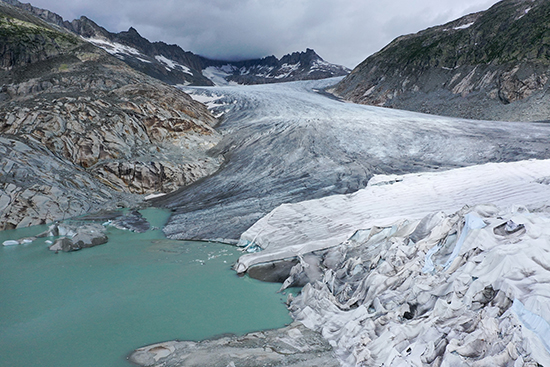气候危机威胁众多行业,但对这个行业来说是机遇

|
许多人将冰川融化及冰川盆地的出现看成坏事,而瑞士研究者则在其中看到了水力发电和淡水存储的机遇。 上周三发表于《自然》杂志(Nature)的这项研究,目前还主要停留在理论层面。该研究对全球185,000座冰川进行了考察,并从环境、技术及经济因素出发,对这些地方建造水坝进行水力发电及淡水存储的可行性进行了评估。如果上述冰川均得到开发,其产生的电能将相当于2015年全球总用电量的7%或全球水坝发电量的35%。 “我们不可能在每座冰川都建造水坝,这种做法既不可持续,也不可取。”作者强调说。这种浩大工程在虚拟土木工程研究方面的价值,以及“对国家能源供应潜在的巨大贡献不容忽视,尤其是在亚洲高山地区,”这里由于高山耸立,冰川覆盖广泛,又被称为地球“第三极”。 除了水力发电潜力巨大,作者还发现,冰川盆地可以容纳当前冰川径流48%的水量。这对干旱地区意义尤为重大,它可以用来储备淡水,以应对未来的水资源短缺。 185,000座冰川中,1,000座的发电潜力占到了总量的三分之一,其中最大的十个可以建造水坝的冰川位于美国、中国、加拿大和尼泊尔。 长期以来,研究者一直预测水电行业的成本将会上升,受极端天气和装机容量下降的影响,这一担忧已经成为现实。 而大型水电项目在立项、融资、开工前,往往都会经历大量的论证,也会听到很多反对声音,因而研究者在挑选坝址时首先考虑的不是营收潜力最大化,而是最小化对环境的影响。该团队对各处的建造成本进行了粗略预估,评估项目包括大坝坝体、发电站、运营及电力输送。根据测算,60%水力发电站的理论峰值生产成本低于50美分/千瓦时。 未参与该研究的哥伦比亚水务中心(Columbia Water Center)的主任厄普曼努·拉尔表示:“不确定性很高,而且从政治上讲,大多数国家都不太可能允许建造新的水库。”(财富中文网) 译者:冯丰 审校:夏林 |
Many look at the world’s melting ice and see glacier basins as half-empty. Swiss researchers see them as half-full of opportunities for hydropower and freshwater storage. The largely theoretical study, published at last Wednesday in the journal Nature, examined 185,000 glaciers around the world and determined where environmental, technical and economic factors would allow for the building of dams to harness both the power of glacier melt and the value of water itself. If all such sites were tapped, the amount of electricity generated would equal 7% of the world’s total electricity consumption in 2015, or 35% of the world’s output from dams. “Building a dam at every glacier location is neither realistic, nor sustainable, nor desirable,” the authors emphasize. The value in such an ambitious exercise in virtual civil engineering is worth considering given, the potentially “important contributions to national energy supplies, particularly in High Mountain Asia,” a region with so much ice it’s informally called the Third Pole. In addition to the massive amount of hydropower, the authors found the glacier basins could hold a combined 48% of the runoff from current glaciers. That’s especially important in arid regions, where such reserves serve as a hedge against future water scarcity. Almost a third of the potential power comes from 1,000 of the 185,000 sites, and the 10 largest glacier basins that could be dammed are in the U.S., China, Canada and Nepal. The hydropower industry is already facing long-predicted higher costs, as operators expect to struggle with both extreme weather and falling capacity in the coming years. Large hydropower projects, however, are rarely planned, financed and built without considerable debate and opposition, which is why the researchers selected sites with an eye towards minimizing environmental impact instead of maximizing potential revenue. The team generated rough cost estimates for each location that included the dam itself, power stations, operations and transmission to the nearest grid. About 60% of the theoretical maximum of plants could have production costs below 50 cents a kilowatt-hour. “The uncertainties are high,” said Upmanu Lall, director of the Columbia Water Center who was not involved in the study, “and it is rather unlikely that, politically, new reservoir construction will be allowed in most countries.” |













